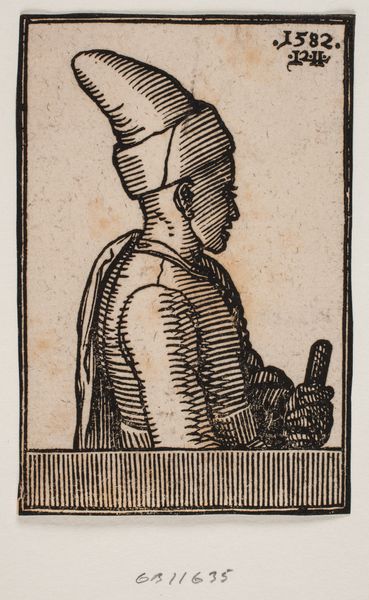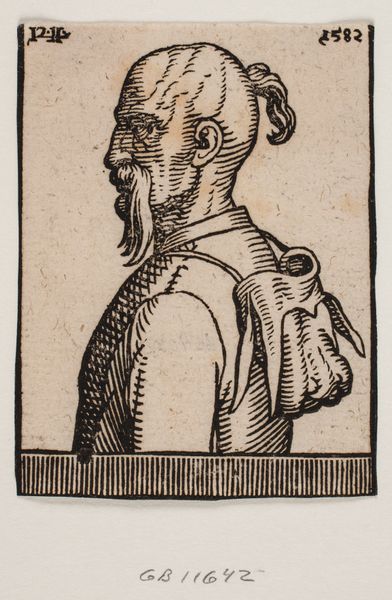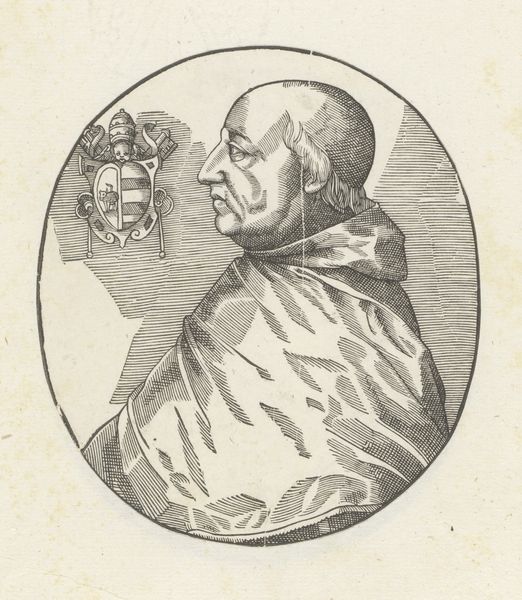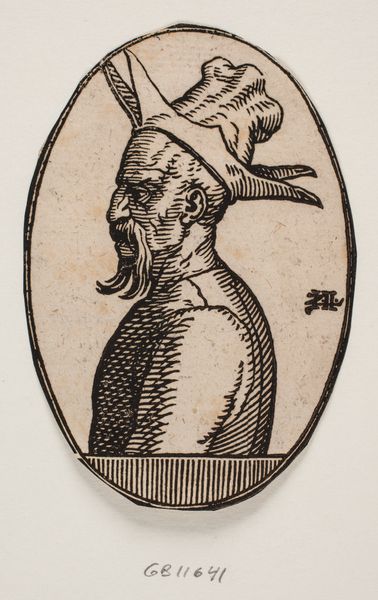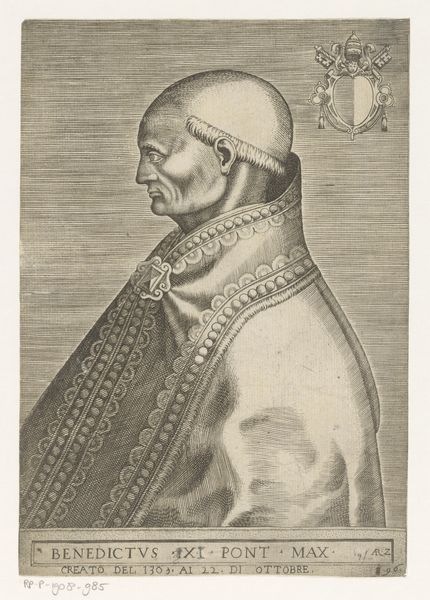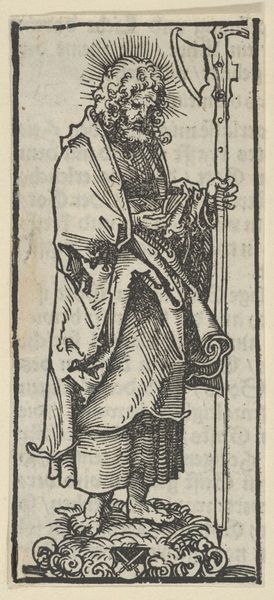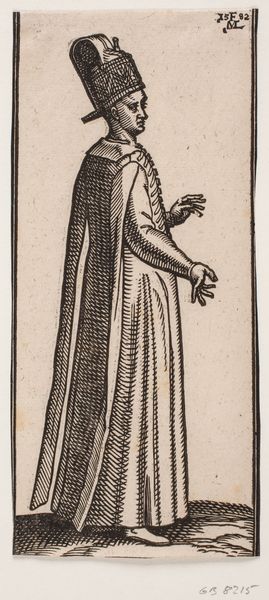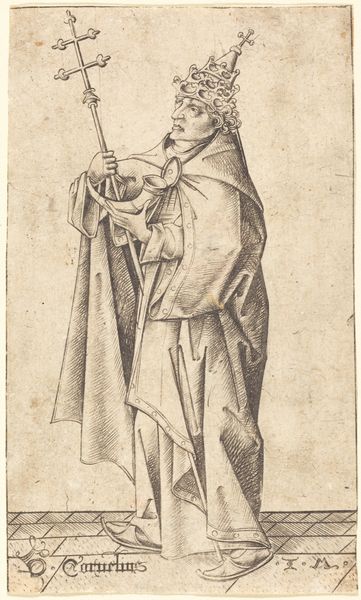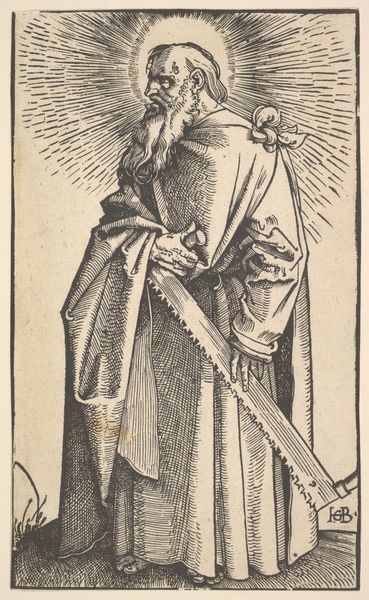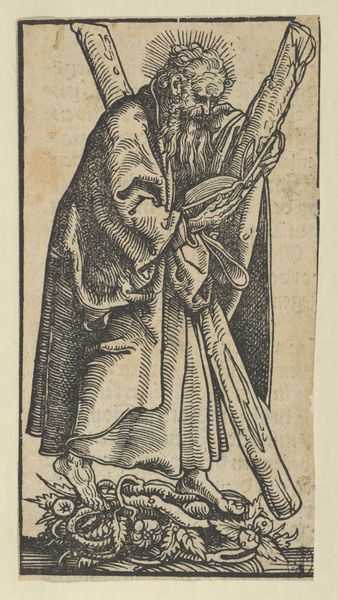
Circular medallion with half-lenght portrait of unbearded man wearing a calotte and an earring, with a fur draped over his shoulder; profile towards the right 1582
0:00
0:00
print, woodcut
#
portrait
# print
#
mannerism
#
woodcut
Dimensions: 118 mm (height) x 80 mm (width) (bladmaal)
Curator: Sober and contained, almost severe—that’s the feeling I get right away from this portrait. What's your first take? Editor: Brooding, maybe even a little bit mournful. There's something vulnerable in that averted gaze. He feels somehow outside of time. Curator: It’s fascinating how a few lines on paper can evoke so much. This is a woodcut from 1582 by Melchior Lorck. It's called "Circular medallion with half-length portrait of unbearded man wearing a calotte and an earring, with a fur draped over his shoulder; profile towards the right". It’s currently housed at the SMK, the Statens Museum for Kunst. Editor: "Calotte," earring, fur... This sounds a bit theatrical! Curator: Portraiture during the late Renaissance was very much about displaying status, you're not wrong! Lorck’s interesting here. He traveled extensively, particularly in the Ottoman Empire. He became fascinated by their customs, clothing, and faces of course. Editor: You know, it's the gaze more than anything that holds my attention. What stories could this man tell? He’s resisting a reading of the face. You almost want to turn his head to catch his eye. Curator: And yet the face is meticulously rendered in this extremely unforgiving medium of woodcut. There's the tension—between revealing and concealing identity. What might surprise our listeners is how common, inexpensive, and reproducible the print medium was becoming! And still, portraiture served a role of propaganda and power in its relative abundance. Editor: Exactly. And there is some kind of propaganda there - to render someone outside his society with that dignity! Still, if one could just climb into that dark line of his, walk for days. It's all a bit unresolved in the negative spaces surrounding his sharpest features - that eye and that neck. What's he turning from? What’s about to happen next in that furrow of his brow? Curator: Perhaps what fascinates you both are the questions around identity that Lorck seems to imply with the piece. How portraits like this reflected social position. Editor: It’s a study in controlled emotions for me - an individual at a crossroad that we have had to piece together 500 years later. It makes one think of time and value both as social constructs and as individual experiences. Curator: Thank you. That's definitely a thoughtful end note.
Comments
No comments
Be the first to comment and join the conversation on the ultimate creative platform.
